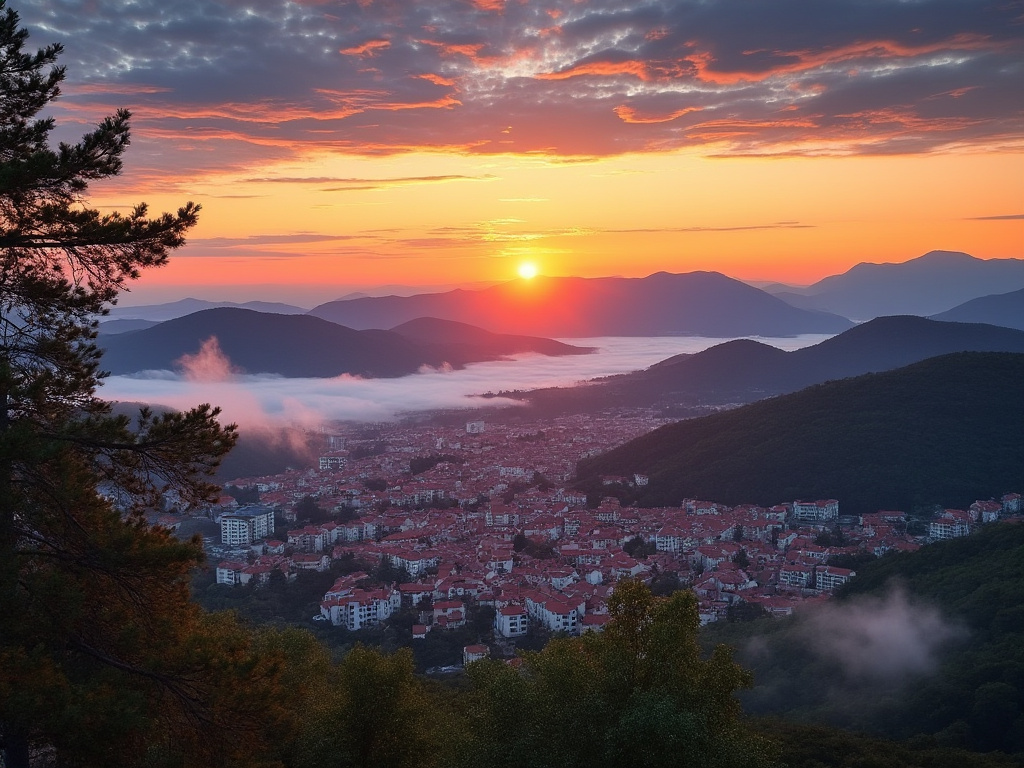Croatia is a stunning European country filled with historical landmarks, natural beauty, and a warm, welcoming culture. Recently, we had the opportunity to learn more about Velika Gorica, a charming city just outside the capital of Zagreb, through the eyes of language teacher Sanja Božinovic (@bsanja). With over 25 years of experience, Sanja brings both insight into the culture and a passion for innovative language teaching methods that TESOL educators will find inspiring.
Discovering the Beauty of Plitvice Lakes
Shelly: Which landmark is a must for visitors?
Sanja: The most beautiful place to see in Croatia is Plitvice Lakes.
A UNESCO World Heritage Site, Plitvice Lakes is a national park with cascading waterfalls, crystal-clear lakes, and lush forests. For TESOL teachers, incorporating landmarks like Plitvice Lakes into lessons provides students with a deeper understanding of Croatia’s natural beauty and cultural pride. Activities can include virtual tours, descriptive language exercises, and even projects that explore environmental conservation.
Taste of Croatia: Popular Local Dishes
Shelly: What are popular local dishes?
Sanja: One of Croatia’s traditional cooking methods is called peka. It’s not just a dish but a way of preparing food that appeals to vegetarians and meat lovers alike. The beauty of peka is its versatility—you can cook meat, fish, or vegetables in a domed iron lid, creating a flavorful and memorable meal.
Sanja’s mention of peka offers a fantastic teaching opportunity for TESOL educators. Exploring food vocabulary and recipe descriptions can help students engage in practical language skills. Teachers can design activities around traditional recipes, encouraging students to describe ingredients, cooking methods, and even the history behind beloved dishes.
Engaging English Learners Through Real-World Projects
Shelly: Describe an activity your English learners enjoy!
Sanja: My students love projects that combine learning English with everyday activities. One project was learning about healthy and unhealthy meals by participating in Jamie Oliver’s “Food Revolution.” My 12-year-old students learned the vocabulary for ingredients, kitchen equipment, and the steps to prepare a “Squash It Sandwich.” At the end of the lesson, they could describe both the sandwich and the preparation process—and they had a blast making and eating the sandwiches together!
Sanja’s approach to language teaching is both fun and practical. By involving students in hands-on activities, she encourages language practice in real-life contexts, allowing students to learn vocabulary and grammar while gaining valuable life skills. TESOL teachers can take inspiration from this by incorporating projects that merge language learning with everyday tasks—whether it’s cooking, crafting, or organizing events. These projects also promote teamwork and active learning, which are essential in language acquisition.
Fun Facts About Croatia for TESOL Teachers
- Land of a Thousand Islands: Croatia boasts over 1,000 islands, each with unique features, from medieval towns to pristine beaches.
- Home of the Dalmatian: The famous Dalmatian dog breed originated in Croatia, specifically in the Dalmatian region.
- Ancient Heritage: Croatia’s historical landmarks include Diocletian’s Palace in Split, built by a Roman emperor, and the medieval walled city of Dubrovnik, known as the “Pearl of the Adriatic.”
- A Culinary Mix: Croatian cuisine combines influences from Italy, Hungary, and Turkey, resulting in a diverse array of flavors that TESOL teachers can introduce to students when discussing cultural diversity.
Teaching in Velika Gorica: The Role of Technology and Collaboration
Sanja has been teaching at OŠ Nikole Hribara, a primary school in Velika Gorica, where she focuses on EFL and Italian as a foreign language. Her teaching philosophy emphasizes the importance of fun, creativity, and international collaboration in language learning. By participating in global projects, she helps students gain an understanding of diverse perspectives and practice language in an authentic context.
Sanja is also an advocate for incorporating technology into the classroom. She is a certified e-moderator and a teacher in Second Life, where she uses digital tools to create immersive learning experiences. Her interest in learning technologies, online courses, and webinars keeps her teaching methods fresh and relevant in an evolving digital landscape.
Thank You, Sanja!
Thank you, Sanja Božinovic, for introducing us to the wonders of Velika Gorica and Croatia. Your insights offer TESOL teachers worldwide inspiration on how to integrate cultural experiences, food, and technology into the language classroom. With her dedication to real-world projects and collaborative learning, Sanja is a wonderful example of how TESOL educators can make language learning both meaningful and enjoyable.
For TESOL teachers interested in exploring Croatia or incorporating Croatian culture into their lessons, Velika Gorica and Plitvice Lakes offer exciting opportunities for cultural enrichment and immersive learning experiences.
Learn more about living and working in Croatia with TESOL certification.



